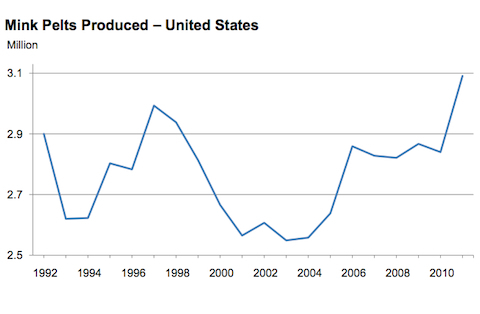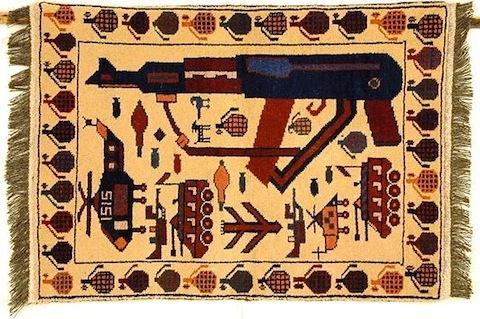Brendan I. Koerner's Blog, page 6
April 2, 2013
The Aztec Way of Marriage
 Perhaps because they were so enthusiastic about ritualistically slicing hearts out of their fellow humans, the Aztecs are rarely examined with much seriousness. This University of Texas collection seeks to correct that oversight, by chronicling the tenets of the legal system that sustained Aztec society until the conquistadors showed up. There is great stuff throughout, such as the bit about the Aztecs’ curious attitude toward alcohol consumption. (“Public drunkenness was punishable by death for younger individuals; however, elders could consume as much alcohol as they wished.”) My favorite part, though, deals with marital law, and includes the revelation that the Aztec definition of “traditional marriage” was rather loosey-goosey:
Perhaps because they were so enthusiastic about ritualistically slicing hearts out of their fellow humans, the Aztecs are rarely examined with much seriousness. This University of Texas collection seeks to correct that oversight, by chronicling the tenets of the legal system that sustained Aztec society until the conquistadors showed up. There is great stuff throughout, such as the bit about the Aztecs’ curious attitude toward alcohol consumption. (“Public drunkenness was punishable by death for younger individuals; however, elders could consume as much alcohol as they wished.”) My favorite part, though, deals with marital law, and includes the revelation that the Aztec definition of “traditional marriage” was rather loosey-goosey:
Marriage was conditional in that the parties could decide to separate or stay together after they had their first son. Marriages could also be unconditional and last for an indefinite period of time.
It’s fun to imagine the middle-aged dating scene in Tenochtitlan, replete with marriage vets who left the kids at home. Babysitting rates must have been through the roof.
March 29, 2013
“Some Were True Believers in Their Cause”
I’m trying to cram in a bunch of last-minute work before disappearing for the (brief) holiday weekend, so I’ll catch y’all on Monday with something about Aztec marital law. In the meantime, please check out the trailer for The Skies Belong to Us, which is the genius handiwork of Thomas Beug (of This is My City fame). And you can hear even more of my voice on this brand-new podcast, in which I discuss heavy-duty archival research, my travails in northwest Burma, and my extremely brief guest appearance on the second episode of Punky Brewster.
March 27, 2013
Next-Level Celebrity Activism
The Gujarati folksinger Farida Mir does not mess around when it comes to political activism. While her Western peers may content themselves with making bold statements in the media, Mir has no problem with getting her hands dirty—particularly when the lives of cows are stake. Just check out how far she recently went to protest a government plan to provide cattle to beef-eating “tribals” in her native state:
The first incident was reported near Kuvadva on the outskirts of the city Friday night when Mir and seven others stopped a truck carrying nine cows and a calf. The truck was on its way to Pavi Jetpur taluka in Vadodara district from Khambahlia in Jamnagar district. The singer and her associates allegedly beat up driver and cleaner of the truck, torn off documents of the animal transfer and vandalised the vehicle.
Mir, who is an active Gaurakshak, filed a complaint against the driver and cleaner under the Prevention of Cruelty to Animal Act 1956 at Kuwadva police station and “rescued” the cows.
You can accuse Mir of many things. But living in the celebrity bubble certainly isn’t one of them.
March 26, 2013
A Tough New Front
 There’s no question that the animal-rights movement has successfully altered America’s attitude toward fur; coats composed of pelts are no longer a de rigueur status symbol for those with too much money on their hands. So why, then, is mink production ramping up to virtually unprecedented levels? Because the newly affluent Chinese covet fur coats to the same degree as the Eisenhower-era wives of industrial tycoons:
There’s no question that the animal-rights movement has successfully altered America’s attitude toward fur; coats composed of pelts are no longer a de rigueur status symbol for those with too much money on their hands. So why, then, is mink production ramping up to virtually unprecedented levels? Because the newly affluent Chinese covet fur coats to the same degree as the Eisenhower-era wives of industrial tycoons:
China imported nearly $126 million worth of U.S. mink pelts last year, making it the second most lucrative mink export market for American fur farmers behind South Korea, according to FAS. The North American Fur Auction, which touts itself as the largest fur wholesale auction house in North America, said nearly three quarters of the 700-plus buyers who attended its Toronto auction in February were Chinese.
Zhang Yiren, a 25-year-old medical magazine employee, tried on a fur coat in a Shanghai shopping mall recently with her parents. “I have had two fur coats and bought them for myself,” she said. “The angora one cost me 1,600 yuan ($250), and I love the style. It is beautiful and keeps me warm.”
Herein lies a difficult challenge for the animal-rights movement—namely, how do they modify their message and tactics to reach Chinese consumers? Cheeky shock tactics may not work quite as well in the Middle Kingdom.
March 21, 2013
The Specialist, Cont’d
 Non-fiction storytelling is ridiculously time-consuming. My latest Wired story, which began life as a Microkhan post in January 2012, has been in the works for nearly a year. Granted, much of that time was wasted on tasks that didn’t pan out—I’m still waiting for a certain FOIA request to come through, for example, not to mention a callback from the Kansas Highway Patrol. But there were also so many hours spent perusing over 3,600 pages of trial transcripts, and talking to people with an incredible amount at stake in the project. The end result is a story that I hope y’all will read and pass along—the tale of a creative genius who became a casualty of the War on Drugs.
Non-fiction storytelling is ridiculously time-consuming. My latest Wired story, which began life as a Microkhan post in January 2012, has been in the works for nearly a year. Granted, much of that time was wasted on tasks that didn’t pan out—I’m still waiting for a certain FOIA request to come through, for example, not to mention a callback from the Kansas Highway Patrol. But there were also so many hours spent perusing over 3,600 pages of trial transcripts, and talking to people with an incredible amount at stake in the project. The end result is a story that I hope y’all will read and pass along—the tale of a creative genius who became a casualty of the War on Drugs.
Special thanks go out to Paul Pope, who provided the story’s perfect illustrations. The one above (click to enlarge) is based on photographs I took in the central character’s San Fernando, Calif., garage.
March 19, 2013
Woven Scars
 One of the tangential characters in The Skies Belong to Us is the late William L. Eageleton, one of the most storied diplomats of the Cold War. When he wasn’t busy representing American interests in global hot spots, Eagleton passed the time by delving into the minutiae of rugs: He was a noted collector of Middle Eastern and North African rugs, as well as the author of an authoritative book on the topic. Tracking his interest in the art form led me the archives of Oriental Rug Review, a wonderfully geeky journal dedicated to the world’s unheralded weavers.
One of the tangential characters in The Skies Belong to Us is the late William L. Eageleton, one of the most storied diplomats of the Cold War. When he wasn’t busy representing American interests in global hot spots, Eagleton passed the time by delving into the minutiae of rugs: He was a noted collector of Middle Eastern and North African rugs, as well as the author of an authoritative book on the topic. Tracking his interest in the art form led me the archives of Oriental Rug Review, a wonderfully geeky journal dedicated to the world’s unheralded weavers.
Much of the journal’s content is only available on paper, but a few in-depth articles have been posted on The Tubes. One of my favorites is this lengthy examination of Afghan war rugs, which includes some incredible photos of rugs created in the aftermath of the Soviet invasion. A highly recommended read for anyone who shares our fascination with the way in which conflict shapes creativity.
March 15, 2013
Everybody Loves the Sunshine
 Having been raised to think that all of the Soviet Bloc resembled the drab realm depicted in this infamous Wendy’s ad, I’m always amused to come across depictions of our Cold War foes basking in the sun. The photo above, of a crowded beach in Odessa, is part of a terrific Ian Berry series from 1982, which includes several more shots of Ukrainians of varying shapes and sizes stretched out on the sand—along with more stereotypical depictions of the city’s bleak corners. Check out a great sampling from the collection here, via the always stellar Vintage Everyday.
Having been raised to think that all of the Soviet Bloc resembled the drab realm depicted in this infamous Wendy’s ad, I’m always amused to come across depictions of our Cold War foes basking in the sun. The photo above, of a crowded beach in Odessa, is part of a terrific Ian Berry series from 1982, which includes several more shots of Ukrainians of varying shapes and sizes stretched out on the sand—along with more stereotypical depictions of the city’s bleak corners. Check out a great sampling from the collection here, via the always stellar Vintage Everyday.
March 13, 2013
Sympathy for the Predator
 Here at Microkhan world headquarters, there are few things we admire more than passionate attention to detail, especially when it’s in the service of chronicling the arcane. And so you can imagine our joy upon encountering this awesomely comprehensive list of bygone mountain lion attacks, which does an excellent job of illustrating North America’s century-long transformation from rugged expanse to giant exurb. The list also contains an intriguing pivot about halfway through, one that goes to show how pop culture can subtly influence all aspects of public discourse:
Here at Microkhan world headquarters, there are few things we admire more than passionate attention to detail, especially when it’s in the service of chronicling the arcane. And so you can imagine our joy upon encountering this awesomely comprehensive list of bygone mountain lion attacks, which does an excellent job of illustrating North America’s century-long transformation from rugged expanse to giant exurb. The list also contains an intriguing pivot about halfway through, one that goes to show how pop culture can subtly influence all aspects of public discourse:
News coverage of Peter Taylor’s death in 1949 demonstrates that this may be the era when people first began to adopt our modern attitudes toward impressive, cute, and/or amusing animals, including predators. Regarding the savage killing of Peter Taylor, a newspaper opined that the cougar was merely “defending what was his own.” This is the first evidence I have found of this now common attitude beginning to emerge. Perhaps laying the groundwork in our psyches from childhood to adulthood, Walt Disney’s influential Bambi in this same era (1942) pioneered and dramatized the concept of man as the most sinister and heartless threat to all wildlife. A few years later Disney’s “true life,” anthropomorphic, animal adventures series began portraying animals with human-like personalities.
Our threat did not diminish as a result of this newfound sympathy, of course—it just became more insidious, as habitat destruction in the name of development replaced outright hunting as the mountain lion’s great affliction. You can see why the great cats might want to seek their revenge on the occasional wayward hiker.
(Image via Hilobrow)
March 11, 2013
Skyjacker of the Day
 Let me assure you that the recent slowdown in Microkhan posting is not due to my having surrendered to indolence. I have instead been busy prepping the launch of a major project in support of The Skies Belong to Us: Skyjacker of the Day.
Let me assure you that the recent slowdown in Microkhan posting is not due to my having surrendered to indolence. I have instead been busy prepping the launch of a major project in support of The Skies Belong to Us: Skyjacker of the Day.
Over the next hundred days, I’ll be profiling a hundred skyjackers from the Sixties and Seventies—mostly Americans, though I reserve the right to toss in the occasional Japanese militant or Cypriot nationalist. The series launches today with a sketch on Frederick Hahneman, best known for parachuting into the Honduran jungle while clutching $303,000 in ransom.
Be sure to check back daily for updates, and please pay a visit to the new The Skies Belong to Us website when you can. Feedback regarding bugs and errors appreciated, and potentially rewarded with some book-related trading cards down the line.
March 8, 2013
Filipino Brass
The annual Musikahan sa Tagum, which just wrapped up its 2013 edition, touts itself as the premier music festival in the entire Philippines. I don’t know enough about that nation’s arts scene to judge the validity of that claim, but I certainly can’t stop watching videos of the Musikahan’s marching-band competition. (The one above, for example, features an epic transition between “Fame” and “Don’t Stop Believin’” about midway through.) The event seems a perfect example of our species’ wondrous knack for hacking culture—the musicians here have taken a distinctly American art form and made it all the more splendid. What I love most about these performances is the way they don’t seem weighted down by their influences—they are not just imitating the stuff of SEC halftime shows, but rather spinning out their own thoroughly Filipino spectacle.
Oh, and be sure to watch for the dancers who kick in around the 3:30 mark. Love how they seem to be doing their own thing to some extent—minor rebels amidst the straitjacketed order of the march.




